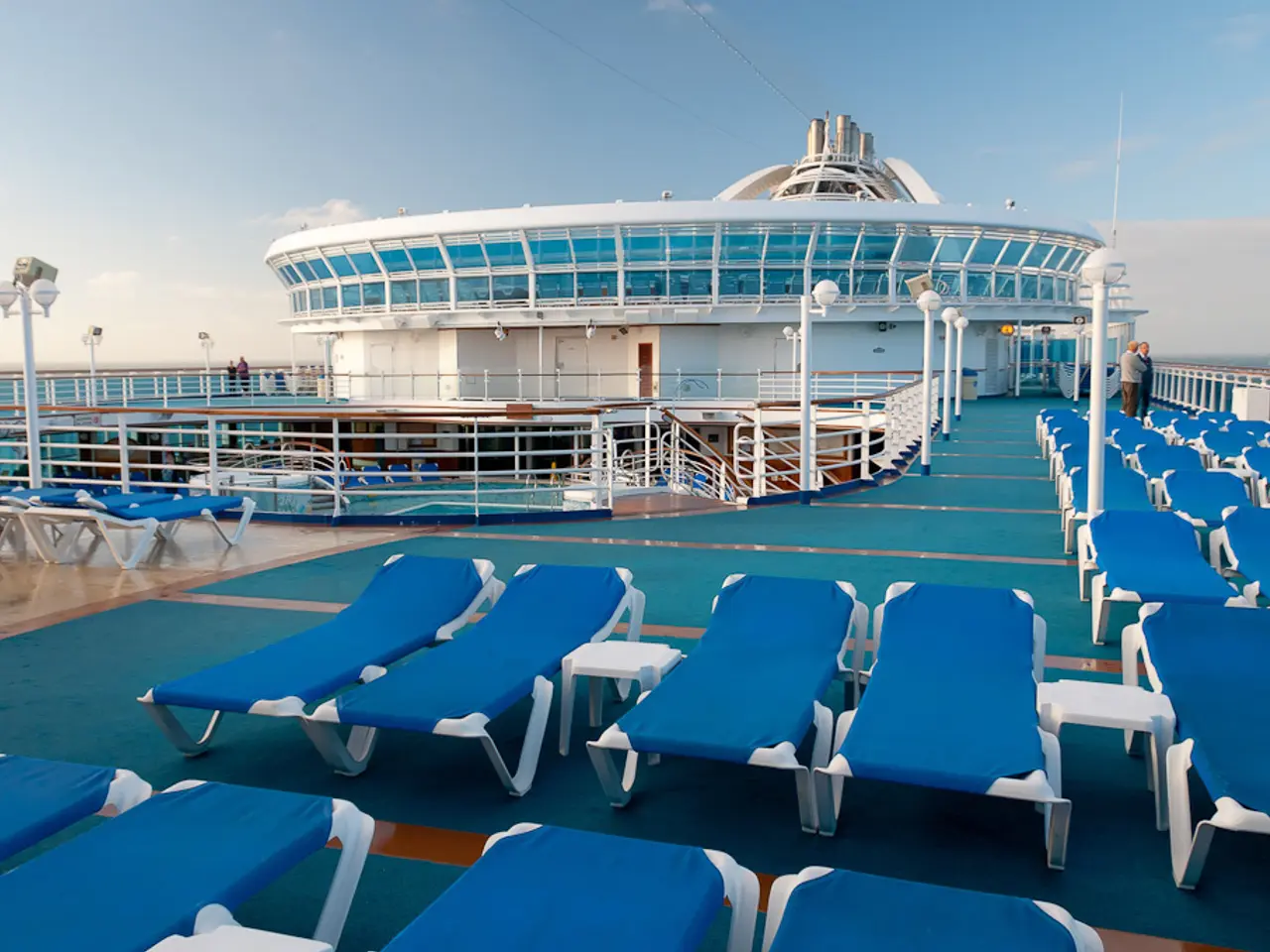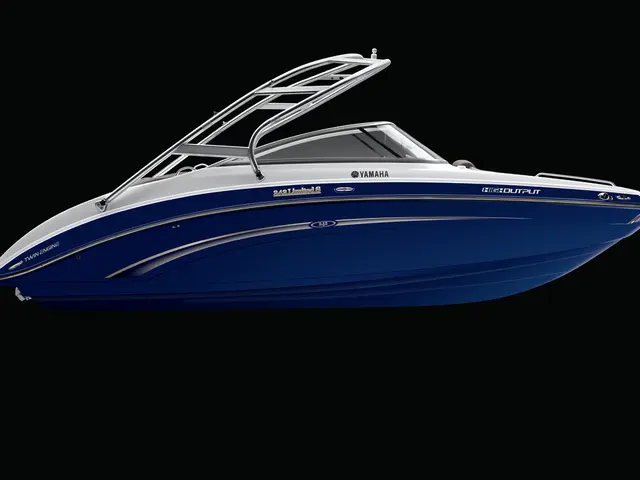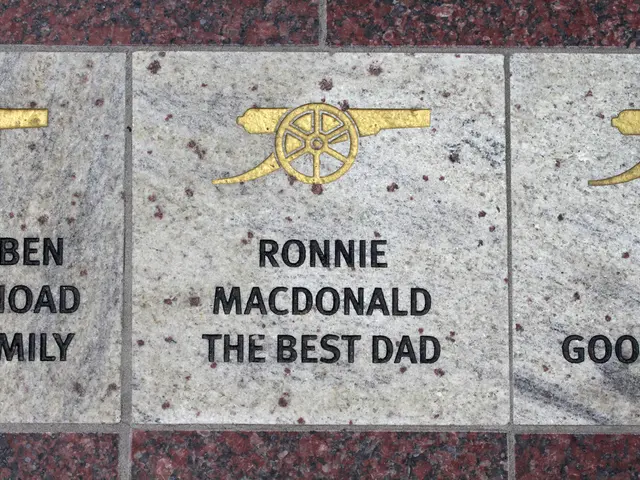Traveling across Europe by Ferry versus Eurotunnel: Comparative Analysis for Your Itinerary Decision
For motorhome enthusiasts planning a tour across Europe, the choice between the Eurotunnel and ferry can be a significant decision. Both options have their unique advantages and disadvantages, and understanding these differences is crucial for making an informed choice.
When it comes to speed, the Eurotunnel offers the fastest crossing, with journeys rarely exceeding two hours. In contrast, typical ferry crossings take around 90 minutes (Dover-Calais), and longer routes can be 1-6 hours or more. However, the ferry process, including boarding and debarking, is more time-consuming than the Eurotunnel.
Regarding ease of process, the Eurotunnel provides a straightforward and automated experience, with passengers staying in their vehicles during the crossing. Ferry crossings, on the other hand, offer more facilities, including cabins, restaurants, and pet facilities. Booking in advance is recommended for ferries, especially during peak travel times.
Flexibility is another crucial factor. While the Eurotunnel offers up to four services per hour (in peak season), ferries have very frequent daily crossings (up to 53 times/day on Dover-Calais). This means that ferries offer more flexibility in timing.
Delays can occur on both options, but the Eurotunnel usually has fewer delays, and it is less affected by weather conditions. Ferry crossings can be delayed or cancelled in bad weather, especially in rough seas.
Location is essential, especially for those travelling to specific destinations. The Eurotunnel runs from Folkestone to Calais, which could be an inconvenience for some due to the travel to and from the ports. Ferry services have varying locations and durations, making them more convenient for various routes across Europe.
For those travelling to Northern Europe, taking a motorhome on the Eurotunnel is generally the best option for ease of travel. However, for a trip to Spain, a ferry from Portsmouth to Santander or Bilbao is a more logical option, as it means they don't have to drive the length of France.
The cost of using the ferry can be comparable to the Eurotunnel for trips to Spain when considering additional costs like fuel, tolls, and campsites. The Eurotunnel is generally more expensive, with camper prices between £129-£638, while ferry camper prices are roughly £86-£335 depending on the route and season.
In summary, the Eurotunnel offers the fastest, most direct, and weather-resilient crossing, ideal for those who prioritize quick Channel crossing with minimal fuss and don't mind staying in their motorhome the entire time. It is slightly more expensive but saves considerable time. The ferry provides more flexibility, a chance for a break from driving, and an enjoyable travel experience, often at a lower cost. It is more affected by weather and takes longer but offers onboard amenities and the opportunity to walk around.
For a motorhome tour, if you value speed and convenience, the Eurotunnel is usually preferable. If you want a more relaxing crossing with a break and don't mind extra time or potential weather delays, the ferry is a great choice. Your exact choice might also depend on your departure and arrival locations, budget, and personal preferences regarding comfort and experience.
Additional tips for avoiding stowaways in a motorhome upon returning to the UK, as provided by Motorhome Matt, can help ensure a smooth and safe journey. Ferry times have increased with the launch of new boats using eco-friendly fuel, LNG, and the ferry offers a break from driving, with the possibility of sleeping on longer crossings. Booking through the Caravan and Motorhome Club can result in cheaper prices and the ability to book all trip elements in one place.
- When considering advice for motorhome enthusiasts planning a tour across Europe, understanding the differences between the Eurotunnel and ferry is crucial for making an informed choice.
- For those in a hurry, the Eurotunnel offers the fastest crossing, with journeys rarely exceeding two hours, but ferry crossings can provide a chance for a break during longer routes.
- The Eurotunnel provides a straightforward and automated experience, with passengers staying in their vehicles during the crossing, while ferry crossings offer more facilities like cabins, restaurants, and pet facilities.
- Flexibility is another crucial factor, as ferries offer more frequent daily crossings, providing more flexibility in timing compared to the Eurotunnel.
- Delays can occur on both options, but the Eurotunnel usually has fewer delays and is less affected by weather conditions, unlike ferries, which can be delayed or cancelled in bad weather.
- Location is essential, with ferry services having varying locations and durations, making them more convenient for various routes across Europe, while the Eurotunnel runs from Folkestone to Calais.
- For motorhome tours, if you value speed and convenience, the Eurotunnel is usually preferable, but if you want a more relaxing crossing with a break and don't mind extra time or potential weather delays, the ferry is a great choice. Booking through travel clubs like the Caravan and Motorhome Club can result in cheaper prices and the ability to book all trip elements in one place.





